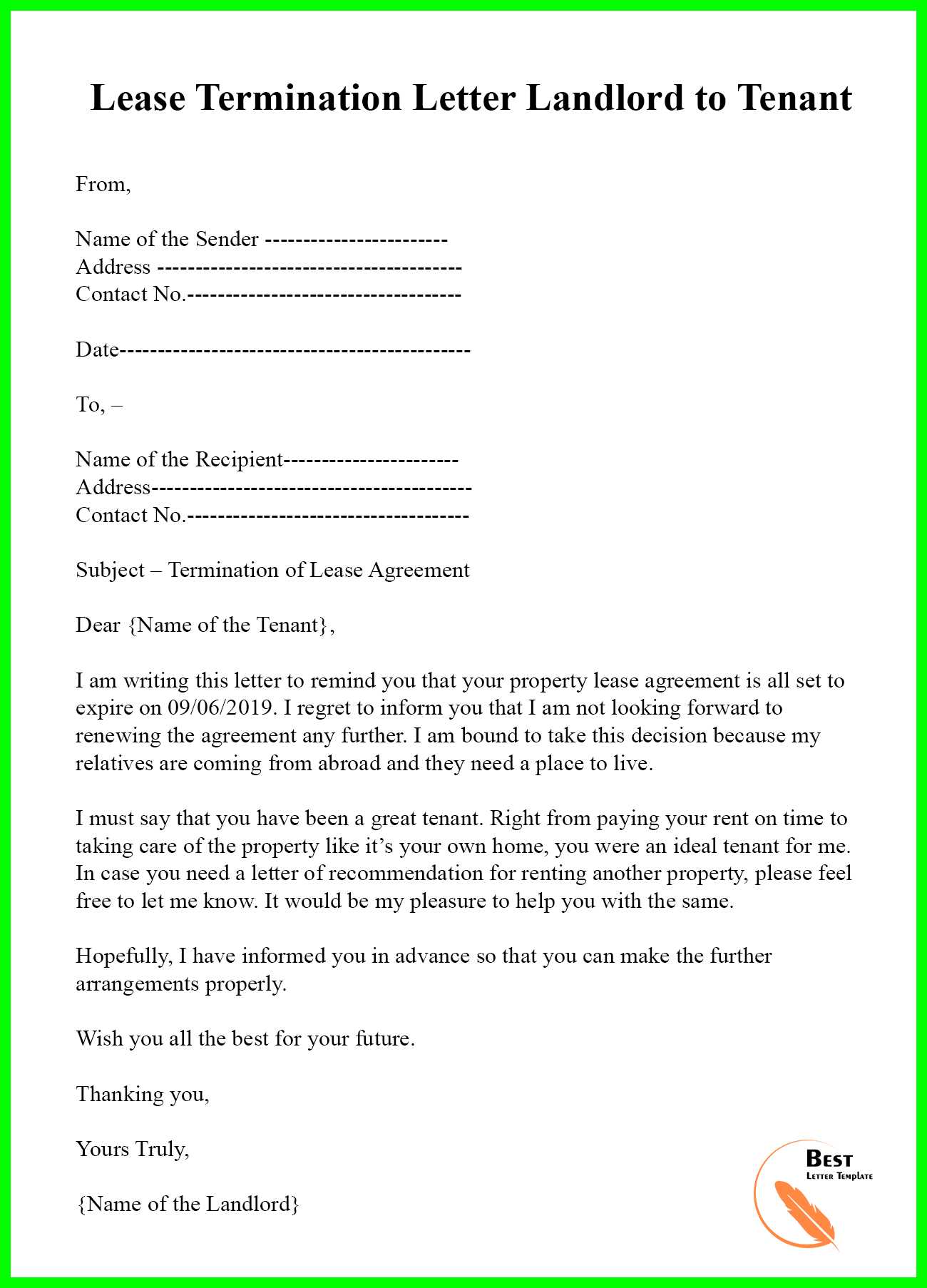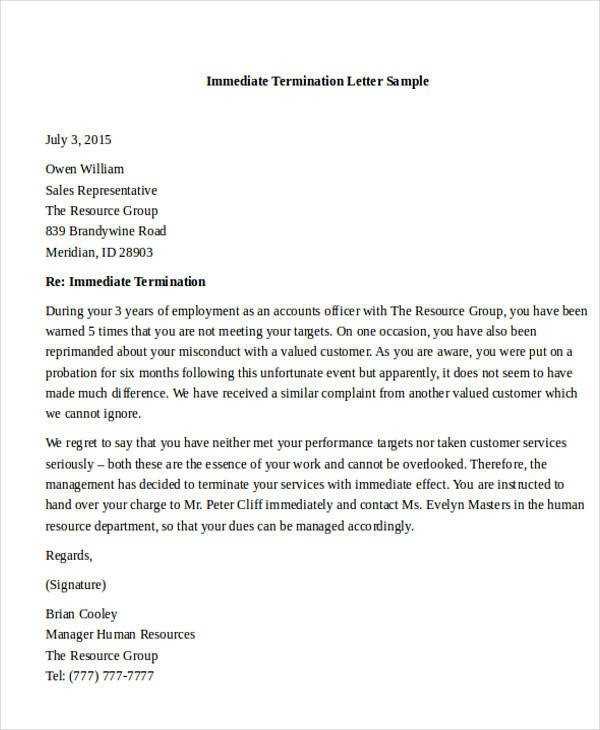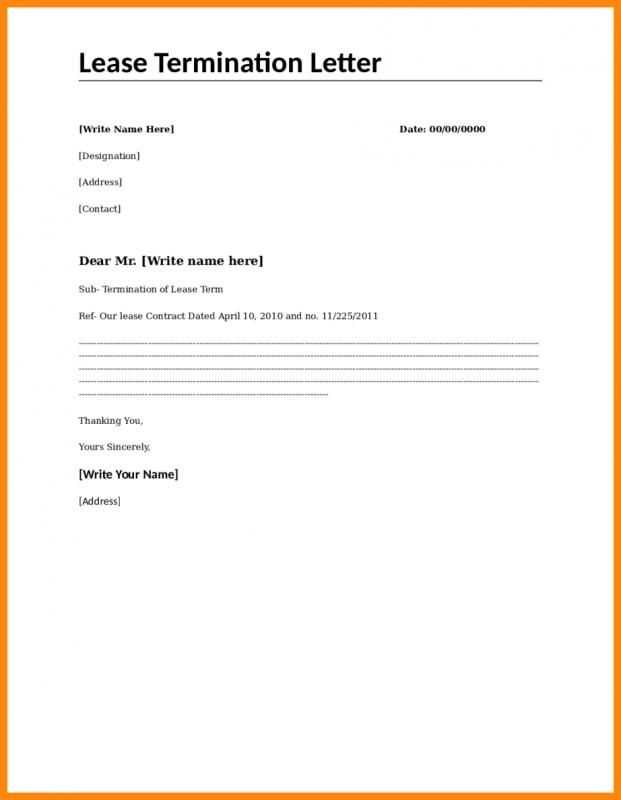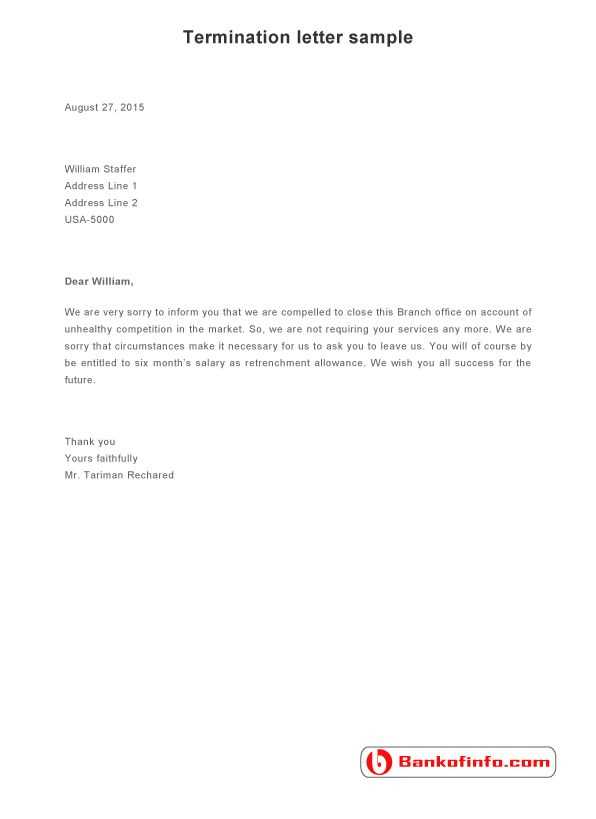Template Termination Letter Guide for Professional Use

Ending a professional relationship, whether with an employee or a business partner, requires a formal and respectful approach. A well-written document ensures clarity and protects both parties involved. This written communication serves as a crucial part of closing a business agreement or employment arrangement, and it needs to convey the necessary details in a concise and professional manner.
Creating an effective notice involves understanding the key points that should be included. These points often cover the reason for the end of the association, any next steps, and specific details that may need to be addressed, such as final payments or return of property. By following a clear structure, you can avoid misunderstandings and ensure that the process is as smooth as possible for everyone involved.
Adopting the right tone is equally important. A respectful and neutral tone fosters professionalism, even in situations that may be sensitive. This balance can make a significant difference in how the message is received and help maintain positive relations moving forward.
Why Use a Template for Termination Letters
Having a predefined structure for important communications helps streamline the process, reducing errors and saving valuable time. When crafting a formal document that ends a professional relationship, following a clear and organized approach ensures that all essential details are included while maintaining consistency. A well-crafted guide can simplify the task, especially for those who may not be familiar with the specific language or format needed in such situations.
Efficiency and Consistency
Using a standardized format ensures efficiency by eliminating the need to create a new document from scratch every time. It allows for consistent phrasing and structure, which is particularly helpful in large organizations where multiple individuals may need to issue these communications. This consistency not only saves time but also helps maintain a professional image across all communications.
Minimizing Risks and Errors
Formal notices that lack the proper structure or include missing information can lead to misunderstandings or even legal complications. By relying on a tried-and-tested framework, you can minimize the risks of overlooking important details or making costly mistakes. This approach helps ensure that both the sender and recipient fully understand the context and next steps.
Key Elements of a Termination Letter

When an employer decides to end a professional relationship, it’s important to communicate the decision in a clear and formal manner. This written communication should outline the relevant details to avoid confusion and ensure both parties are fully informed about the circumstances surrounding the decision. A well-structured message provides clarity and ensures professionalism throughout the process.
Essential Information to Include

- Reason for Ending the Employment: Clearly stating the cause helps to provide transparency. Whether it’s performance-related or due to other factors, a clear explanation is necessary.
- Effective Date: Indicating the exact date when the employment will end ensures both sides are aware of the timeline.
- Final Pay and Benefits: Detailing any owed payments, severance, or outstanding benefits provides clarity on financial matters.
- Return of Property: If the employee has company property, a mention of returning items is essential.
- Next Steps: Offering guidance on post-employment procedures, such as how to obtain final documents, can be helpful for a smooth transition.
Tone and Professionalism
The tone of the message should always remain professional, regardless of the reasons behind the decision. It’s crucial to avoid being confrontational or overly emotional. Instead, the language should be respectful, neutral, and clear, maintaining dignity for both parties involved.
How to Write a Clear Letter

Effective communication is key when delivering important information, especially in situations where clarity is critical. To ensure the message is understood without confusion, it is important to structure the content in a direct and concise manner. A well-written communication minimizes ambiguity and ensures both parties are aligned on the details provided.
Be Direct and Specific: Avoid unnecessary elaboration. Stick to the key points, clearly stating the reason behind the communication and any required actions. Specificity helps to prevent misunderstandings.
Use Simple and Concise Language: Keep the language straightforward and free of jargon. Complex terms or overly formal phrases can cloud the message, so prioritize clarity over complexity.
Include Important Dates and Details: Make sure all relevant dates, such as when the change will take effect, are clearly mentioned. Additionally, any next steps should be explicitly outlined so the recipient knows what to expect.
Maintain a Professional Tone: Regardless of the context, the tone should always remain respectful and neutral. Aim for a professional demeanor to preserve a constructive atmosphere, even in challenging situations.
Common Mistakes to Avoid in Letters
While drafting important written communications, it’s easy to make mistakes that can create confusion or leave a negative impression. Ensuring that every detail is accurate and the tone is appropriate is essential. Avoiding common pitfalls will help ensure the message is both professional and effective.
Failure to Be Clear and Direct
One of the most frequent errors is being vague or indirect in the message. Ambiguity can lead to misunderstandings, leaving both parties uncertain about the details. It’s crucial to be as clear and precise as possible about the purpose and expectations in the communication.
Inappropriate Tone and Language
Another mistake to watch for is using an unprofessional or overly casual tone. Regardless of the situation, maintaining respect and professionalism is essential. Harsh, emotional, or informal language can damage relationships and lead to unnecessary conflict.
Additionally, improper grammar or punctuation can detract from the professionalism of the message. Always double-check the content for any spelling or grammatical issues before sending it to avoid undermining the clarity and credibility of the communication.
Best Practices for Professional Communication
Clear and respectful communication is essential in maintaining a professional environment. Whether delivering important updates or conveying decisions, following best practices ensures that the message is understood and that relationships are preserved. It’s crucial to remain organized and considerate, while also being transparent and precise.
One of the key practices is to ensure that all communication is tailored to the specific situation. Adjusting the tone to suit the context while keeping it neutral and respectful can help in maintaining a constructive atmosphere. Always be mindful of the recipient’s position and the potential impact of the message.
Additionally, staying concise and organized is critical. Avoid overwhelming the reader with unnecessary details. Focus on the key points and outline any next steps in a clear manner. This approach saves time and reduces the risk of confusion.
Lastly, before sending any formal communication, review it for clarity and accuracy. Proofreading helps to ensure that all information is correct and that the message is free of any errors that could undermine its professionalism.
Examples of Effective Termination Letters
Presenting a well-structured message when ending a professional relationship is essential for both clarity and professionalism. The best examples are those that communicate the necessary details without being overly complicated. The following examples highlight key elements that contribute to an effective and respectful communication process.
Example 1: Performance-Based Conclusion
| Recipient | Reason | Effective Date | Next Steps |
|---|---|---|---|
| John Doe | Failure to meet performance expectations despite support and feedback | February 10, 2025 | Return company property by February 8; final payment will be processed |
This example clearly outlines the reason for ending the relationship and the steps for transitioning smoothly. The tone remains respectful, and the next steps are defined to ensure clarity on both sides.
Example 2: Redundancy-Based Conclusion
| Recipient | Reason | Effective Date | Next Steps |
|---|---|---|---|
| Jane Smith | Role eliminated due to organizational restructuring | March 1, 2025 | Severance package details provided; contact HR for further support |
This example highlights a situation where the employment is concluded due to company changes, not performance. It provides clear details about compensation and available support, ensuring the recipient has the information they need for the transition.